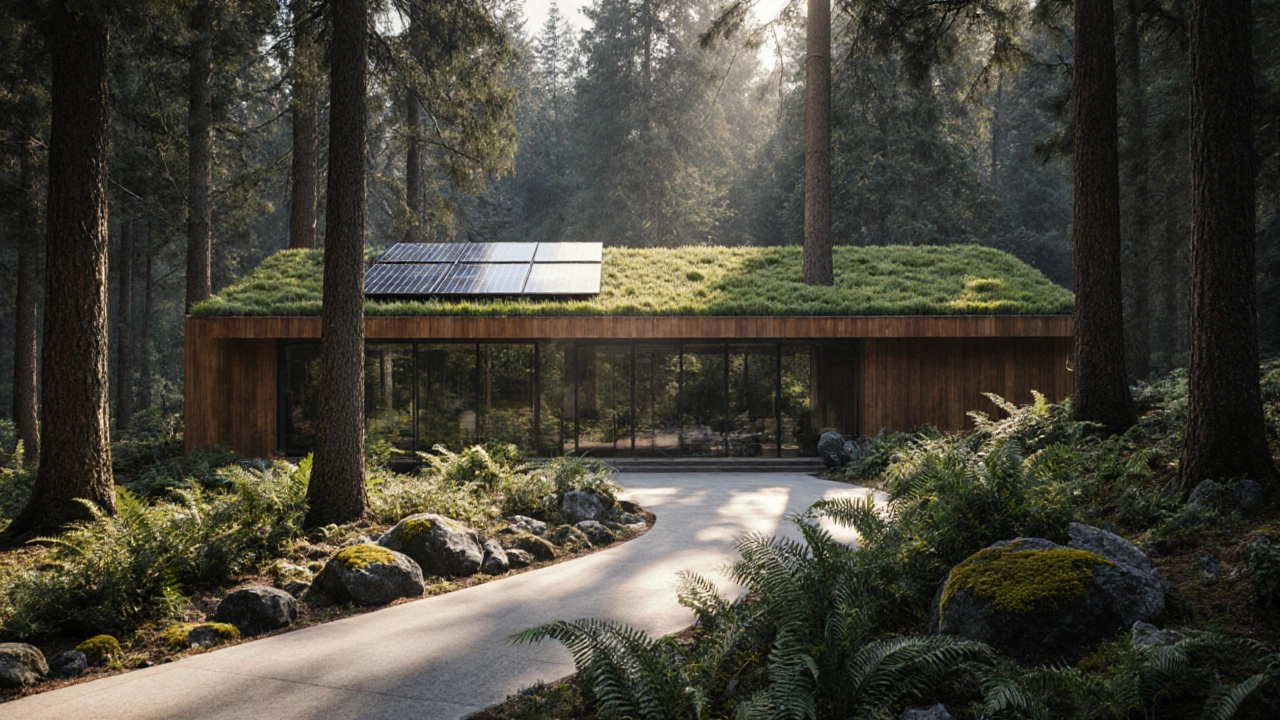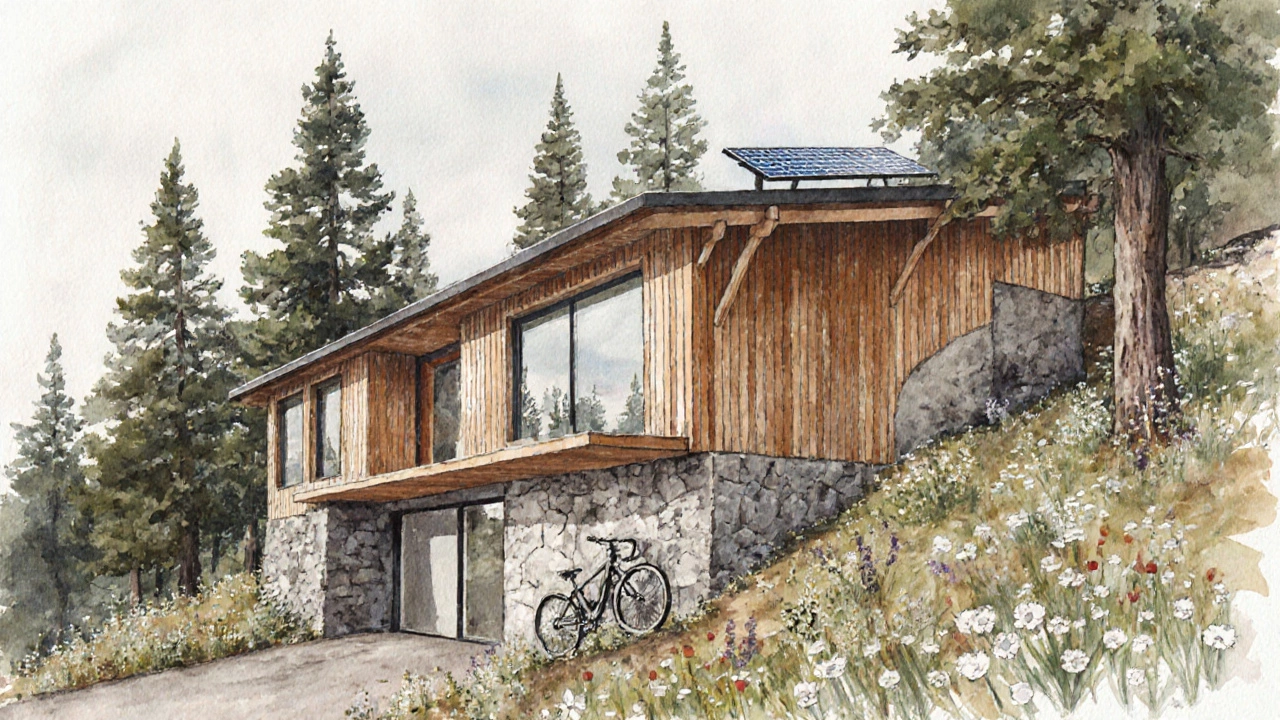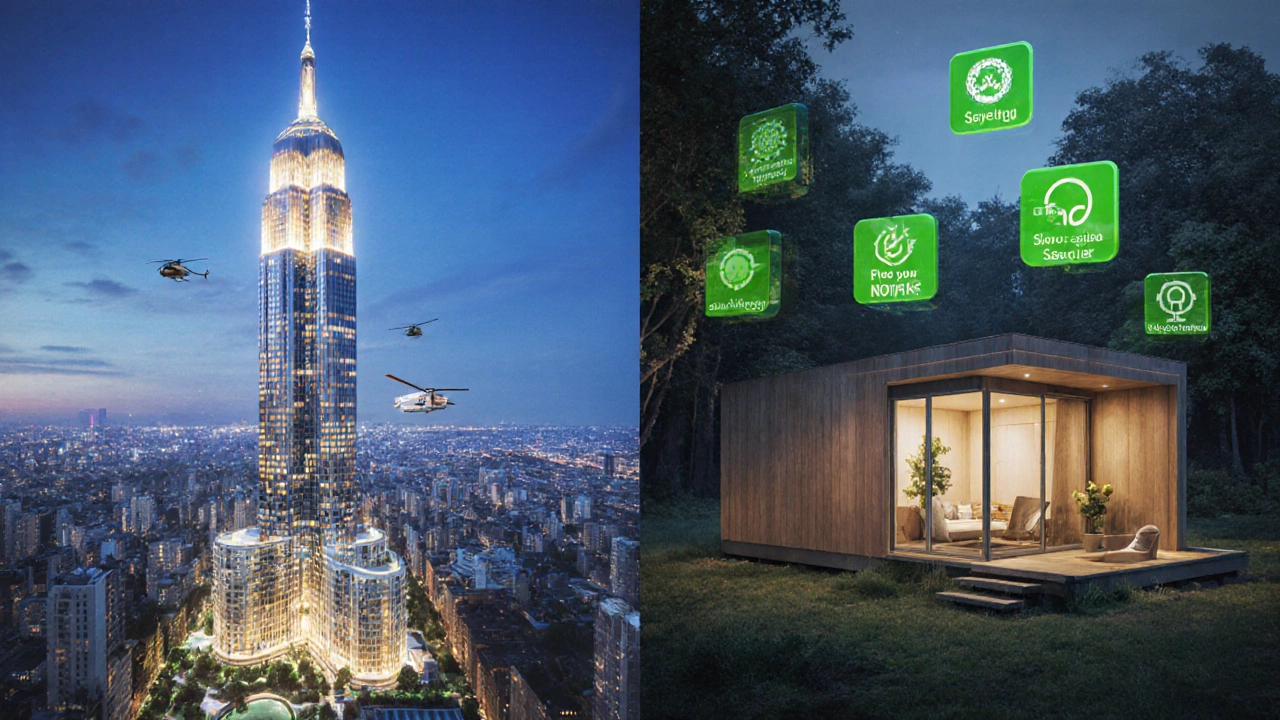Which Billionaire Has the Most Expensive House? The Hidden Truth Behind Luxury Homes and Eco-Friendly Cottages
 Nov, 5 2025
Nov, 5 2025
Sustainable Home Savings Calculator
Calculate Your Savings
Discover how much you could save with eco-friendly upgrades inspired by billionaire sustainable homes.
Why This Matters
Just like Bezos' $500 million compound, your home can be both luxurious and sustainable without breaking the bank. The same principles that make billionaire homes eco-friendly can be applied to your home.
Your Potential Savings
When you hear "most expensive house in the world," you probably picture a palace with gold-plated faucets, a private cinema, and a helicopter pad. And yes, some billionaires do live like that. But here’s what most people don’t realize: the single most expensive home ever sold isn’t a sprawling estate in Beverly Hills or a Parisian chateau. It’s a quiet, forested compound on the edge of Lake Washington - owned by Jeff Bezos - and it’s not just expensive because of its size. It’s expensive because it’s one of the few luxury homes on Earth built to disappear into nature, not dominate it.
The $500 Million House That Doesn’t Look Like a House
In 2016, Jeff Bezos bought a 42-acre waterfront property in Medina, Washington, for $110 million. But that was just the land. Over the next five years, he spent an additional $390 million to build what’s now called the "Bezos Compound." The final price? Around $500 million. That’s more than the GDP of some small countries. Yet if you drove past it, you’d barely notice it.
There’s no towering façade. No marble columns. No gilded gates. Instead, the main residence is a low-slung, modern structure wrapped in local cedar and glass, blending into the trees. The roof is covered in native grasses. Solar panels are hidden under the eaves. Rainwater is collected and filtered for irrigation. The entire property runs on renewable energy. Even the driveway is made of permeable recycled concrete to reduce runoff.
This isn’t just a house. It’s a statement. Bezos didn’t build the most expensive home to show off. He built it to prove that extreme wealth and extreme sustainability can coexist - even at the highest levels.
Why Other Billionaires’ Homes Don’t Compare
Let’s be clear: other billionaires own homes that cost more on paper. Mukesh Ambani’s Antilia in Mumbai is valued at over $1 billion. But that’s an 27-story skyscraper with three helipads, a 160-car garage, and a staff of 600. It’s a monument to excess. It doesn’t try to hide. It screams.
Then there’s Larry Ellison’s 1,100-acre estate on Maui. He owns 98% of the island’s western side. His main home is a Japanese-inspired villa with 100 rooms, a private zoo, and a 100-foot infinity pool. But the land alone cost $200 million. The house? A fraction of that. And while it’s beautiful, it’s not designed to be eco-friendly - it’s designed to be untouchable.
Bezos’s home doesn’t compete in size. It competes in intelligence. Every material was chosen for its carbon footprint. Every window is positioned to maximize natural light and passive heating. The landscaping uses zero irrigation after the first year. Even the security system is solar-powered and camouflaged.
The Rise of Eco-Friendly Luxury
For decades, luxury real estate meant marble floors, crystal chandeliers, and gold-plated fixtures. Sustainability? That was for hippies and nonprofits. But in the 2020s, that changed. The world’s wealthiest are now hiring architects who specialize in regenerative design - not just reducing harm, but healing the land.
Take the $150 million home in Aspen, Colorado, owned by a tech investor. It’s built into the side of a mountain. The walls are made of cross-laminated timber harvested from sustainably managed forests. The roof harvests snowmelt, which is stored in underground tanks and used for toilets and laundry. The home produces 200% more energy than it uses - and sells the surplus back to the grid.
These aren’t gimmicks. They’re the new standard for ultra-luxury homes. And they’re expensive - not because they’re flashy, but because they’re engineered to last 200 years with zero maintenance. That’s what makes them worth half a billion dollars.

What Makes an Eco-Friendly Cottage Different?
You might be thinking: "But this article is about eco-friendly cottages. How does a $500 million mansion fit?"
Here’s the connection: the same principles that make Bezos’s home sustainable are the same ones that make a $200,000 cottage in Oregon or Vermont a smart investment. Both use local materials. Both rely on passive solar design. Both avoid toxic paints and synthetic insulation.
The difference? Scale. A billionaire can afford to install a geothermal system that costs $200,000. A regular person can install a smaller version for $30,000. The outcome? Nearly identical - lower energy bills, cleaner air, less environmental damage.
That’s why eco-friendly cottages are the future. They’re not just for off-grid dreamers. They’re for anyone who wants to live well without wrecking the planet. And now, even billionaires are building them - not because they have to, but because they can.
What You Can Learn From the World’s Most Expensive House
You don’t need $500 million to build a home that respects the Earth. But you can learn from what Bezos did:
- Choose materials that age gracefully. Cedar, stone, and reclaimed wood don’t need paint or sealant. They get better with time.
- Design for the sun. South-facing windows in the Northern Hemisphere mean free heating in winter. Overhangs block summer heat.
- Forget the big garage. Most people don’t need two cars. A shared EV charger and bike storage do more for the planet.
- Let nature stay. Don’t clear every tree. Keep the old oaks. Let the moss grow. Wildlife thrives in quiet corners.
- Build small, but build smart. A 1,200-square-foot home with good insulation beats a 5,000-square-foot mansion with poor windows.
These aren’t luxury upgrades. They’re common sense. And they’re the reason eco-friendly cottages are selling faster than ever - even in expensive markets like California and New York.

The Real Cost of a Billionaire Home
Here’s the uncomfortable truth: the most expensive house in the world isn’t expensive because of its price tag. It’s expensive because of what it represents - a shift in how the ultra-rich think about legacy.
Before, legacy meant a name on a building. Now, it means leaving the land better than you found it. Bezos didn’t buy land to build a trophy. He bought it to protect it. That’s why his home is worth more than any other - not because of its square footage, but because of its silence.
And that’s the quiet revolution happening in luxury real estate. The most valuable homes aren’t the loudest. They’re the ones that breathe with the earth.
What’s Next for Luxury and Sustainability?
By 2030, every new luxury home over $10 million will be required to meet net-zero energy standards in at least 12 U.S. states. That’s not speculation - it’s already in draft legislation.
Developers are starting to build "sustainability passports" for homes - like a nutrition label for buildings. You’ll be able to scan a QR code and see: how much carbon was saved? How much water was conserved? How many native plants were planted?
And guess what? The same tech that tracks Bezos’s energy use is now being used in $150,000 eco-cottages. You don’t need to be a billionaire to have a home that leaves a positive footprint.
Who owns the most expensive house in the world?
As of 2025, Jeff Bezos owns the most expensive single home ever built - his $500 million compound in Medina, Washington. While other billionaires own larger estates or more expensive land packages, Bezos’s property holds the record for the highest total investment in a single residential structure, including construction, land, and sustainable systems.
Is Jeff Bezos’s house eco-friendly?
Yes. Bezos’s home is one of the most sustainably engineered residences on Earth. It uses solar power, geothermal heating, rainwater harvesting, and native landscaping. The materials are low-carbon, the energy use is net-positive, and the design blends into the forest rather than disrupting it. It’s a model for what luxury sustainability can look like.
Can regular people afford eco-friendly homes like Bezos’s?
You don’t need to spend $500 million to live sustainably. The same principles - passive solar design, local materials, energy efficiency, and water conservation - can be applied to a $200,000 cottage. Many eco-cottages today use the same technologies as Bezos’s home, just scaled down. A small solar array, insulated walls, and a rainwater tank can cut your energy bill by 70%.
Why are eco-friendly cottages becoming popular?
Because they’re affordable, low-maintenance, and future-proof. With energy prices rising and climate regulations tightening, homes that use less power and water are becoming more valuable. Buyers aren’t just looking for charm - they’re looking for resilience. Eco-cottages offer both.
Do billionaire homes inspire real change in housing?
Absolutely. When billionaires invest in sustainable design, it pushes architects, builders, and suppliers to innovate. Technologies once considered too expensive - like cross-laminated timber or smart insulation - become mainstream. What starts as a luxury trick becomes a standard practice. Bezos’s home didn’t start the trend, but it accelerated it.